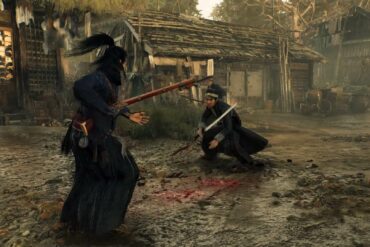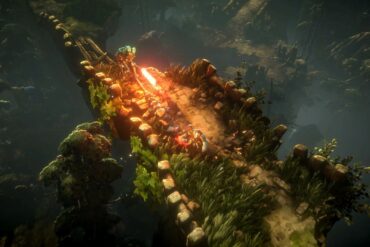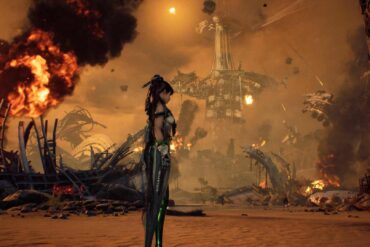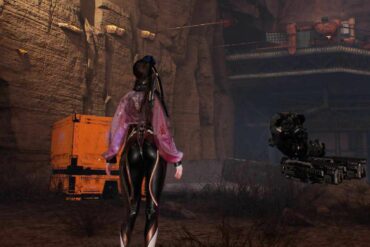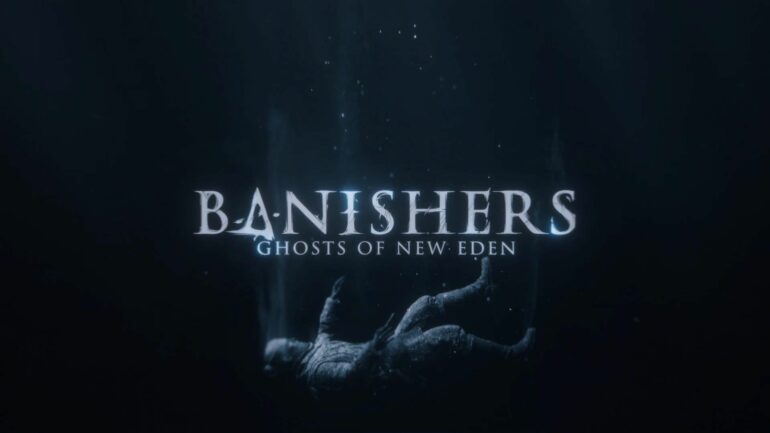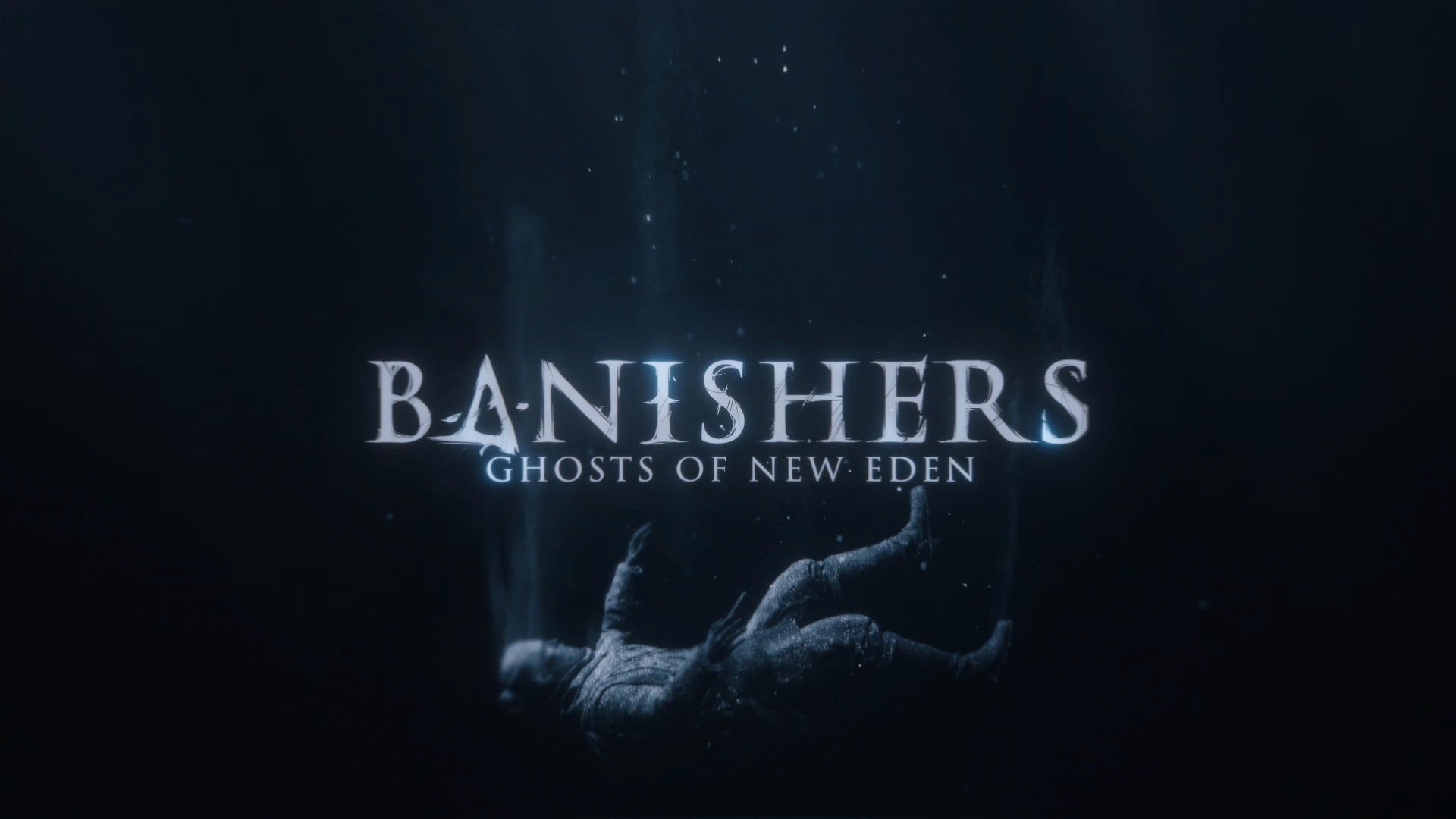There is an awful lot to say about Banishers: Ghosts of New Eden. There’s a part of me that wants to tell you it is an unpolished God of War clone that apes its best ideas and implements them with little iteration, that it’s a bug-ridden mess with janky gameplay, dull combat, and a meaningless RPG system, that its story rarely reaches the heights its concept promises, its choices utterly devoid of consequence. However, there too lies within me a part, albeit a small one, that feels there is something special about Banishers, moments of genuine intrigue that spurred me to complete its 20-plus-hour story. Unfortunately, I’m not convinced those fleeting moments warrant playing the game at all.
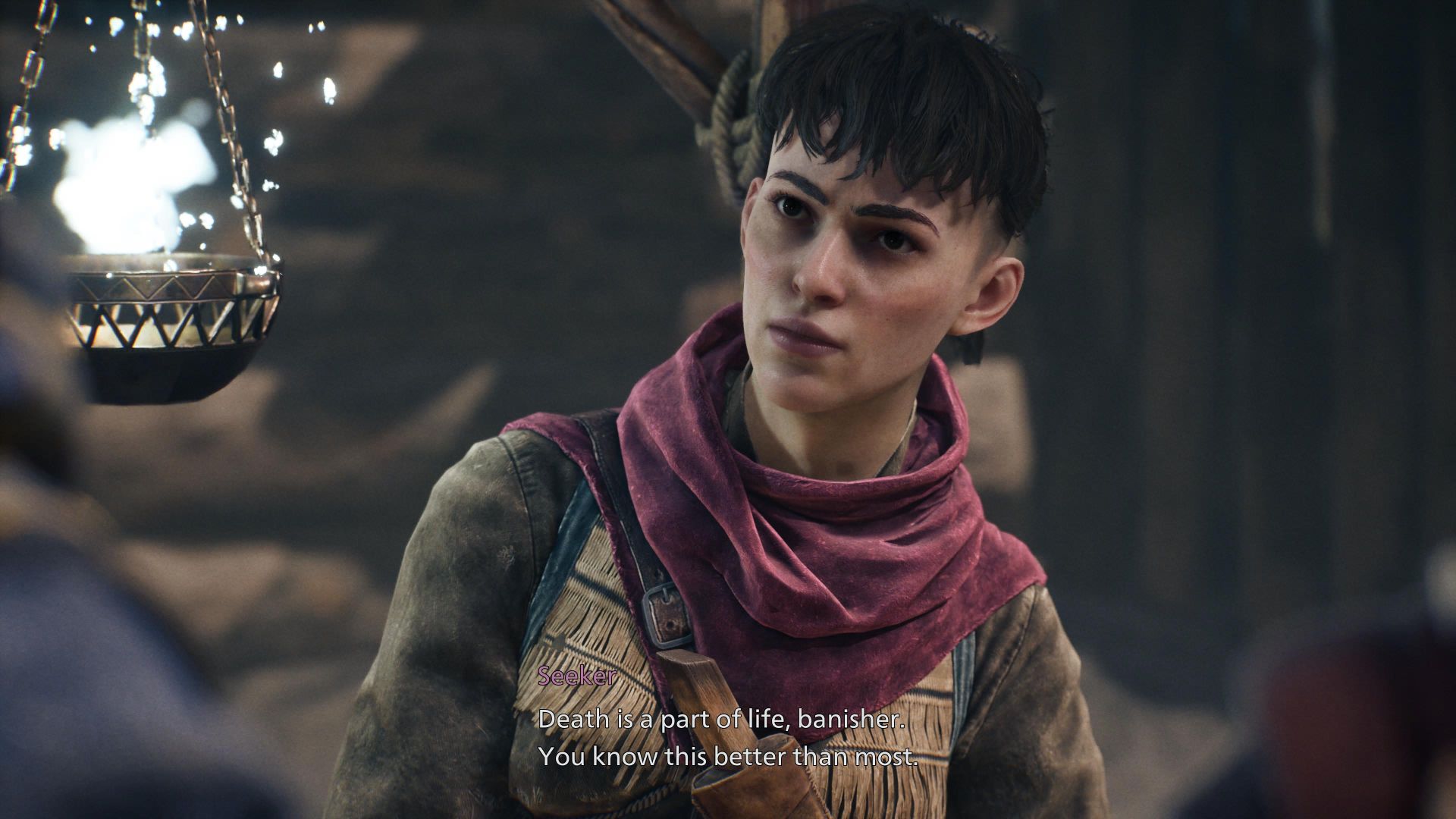
“The lack of chemistry between the protagonists robs the choices presented to you as earth-shatteringly heartbreaking of any real meaning of point.”
Banishers: Ghosts of New Eden tells the story of two Banishers, Antea and Red mac Raith, who set sail for New Eden, a series of settlements cursed by a Nightmare. Shortly after they arrive, Antea is killed by this Nightmare, and, now a specter, must guide Red towards defeating it and recovering her body. She wants to Ascend to the afterlife, but Red is keen on bringing her back to life. Therein lies the crux of Banishers’ core concept, either sacrificing the settlers of New Eden in order to bring Antea back or sparing them to Ascend her.
This, in theory, makes for a compelling love story, one fraught with loss and grief, interwoven with the complex moral quandaries and politics of the New Eden settlers. Unfortunately, it is absolutely wasted, owing to the fact that Antea and Red’s relationship feels muted at best, a grossly underdeveloped bond that is neither romantic nor familiar. They often speak to one another as if they are meeting for the first time, sharing stories they should already know, evidently for the audience’s benefit. Rarely in conversation with one another will they display any semblance of romantic intention.
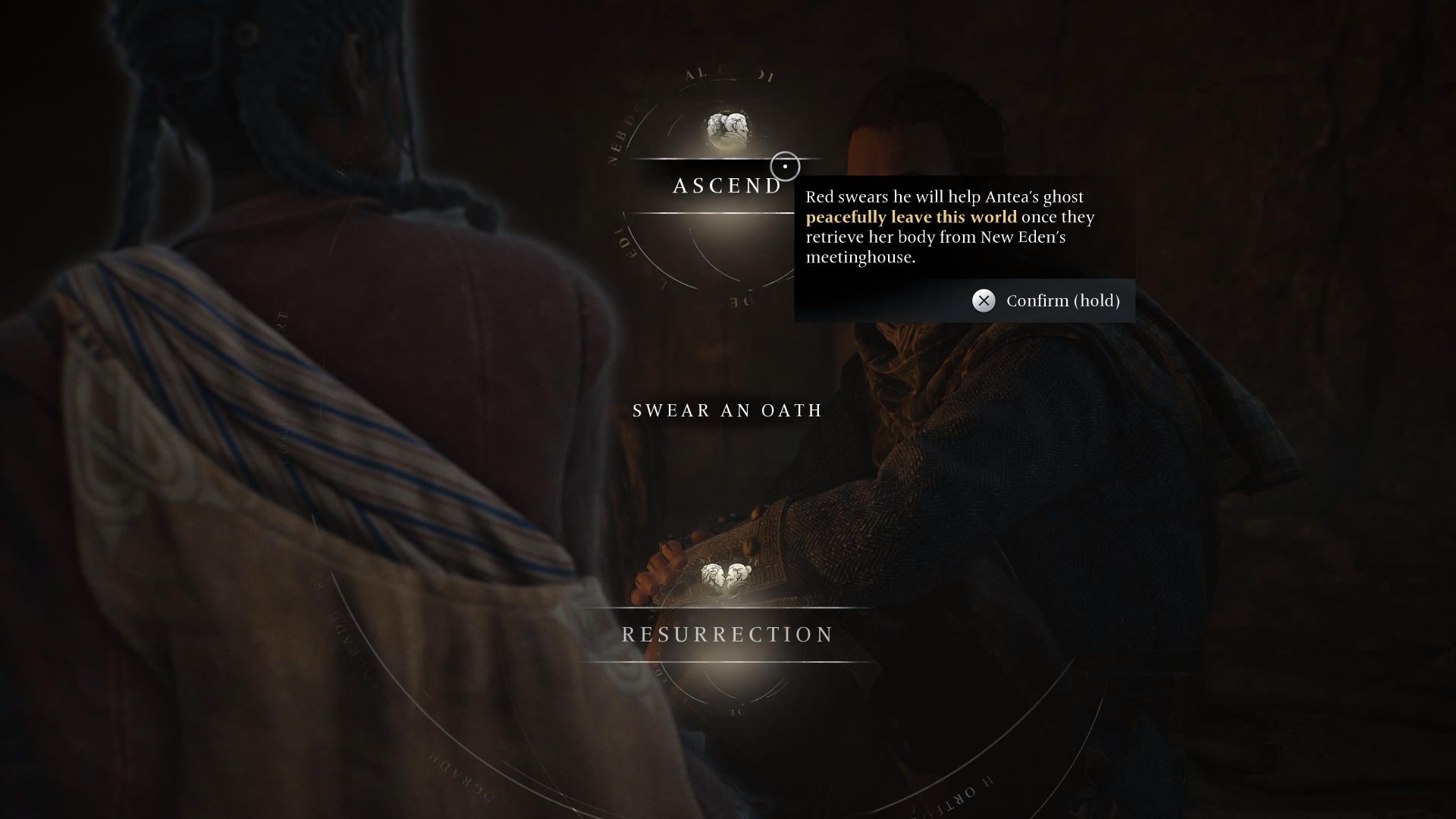
That lack of chemistry doesn’t make them any less compelling individually, but it does rob the choices presented to you as earth-shatteringly heartbreaking of any real meaning. It’s confounding that the game spends so little time with the two before Antea’s death, instead delving into their past together through infrequent anecdotes and passing comments. Perhaps the game’s introduction would have been better spent developing their relationship rather than diving head-first into the mystery. Ultimately, it meant that beyond the occasional moment in which Red laments that it’s a tough decision, there was never a moment in which I felt saving Antea warranted murdering people.
“Should you be able to put aside the game’s rather undeveloped romance, you may find enjoyment in this somber tale.”
It’s a shame, then, that the tough choices so prominently advertised in Banishers’ marketing are squandered. Fortunately, the game’s somewhat captivating world-building and branching narrative threads make up for it, offering some genuinely captivating sequences centered around the game’s far more compelling subplot. Outside of the plot to save Antea, Banishers: Ghosts of New Eden focuses on the story of a woman wrongly accused. You’ll encounter several key characters, all of whom had some involvement in her untimely death, and each of which is excellently fleshed out.
These side stories that ultimately make up the bulk of the game’s runtime are all satisfyingly developed and help make the game’s ending feel far more compelling than it deserves. They’re bolstered by the game’s writing, which manages to avoid feeling cumbersome while deftly weaving character motivation and unique quirks throughout each encounter. I never found any to be remarkably exceptional, but they do complement the somber world-building and help create a cohesive world that, while never enjoyable to experience, is nonetheless interesting. Should you be able to put aside the game’s rather undeveloped romance, you may find enjoyment in this somber tale.
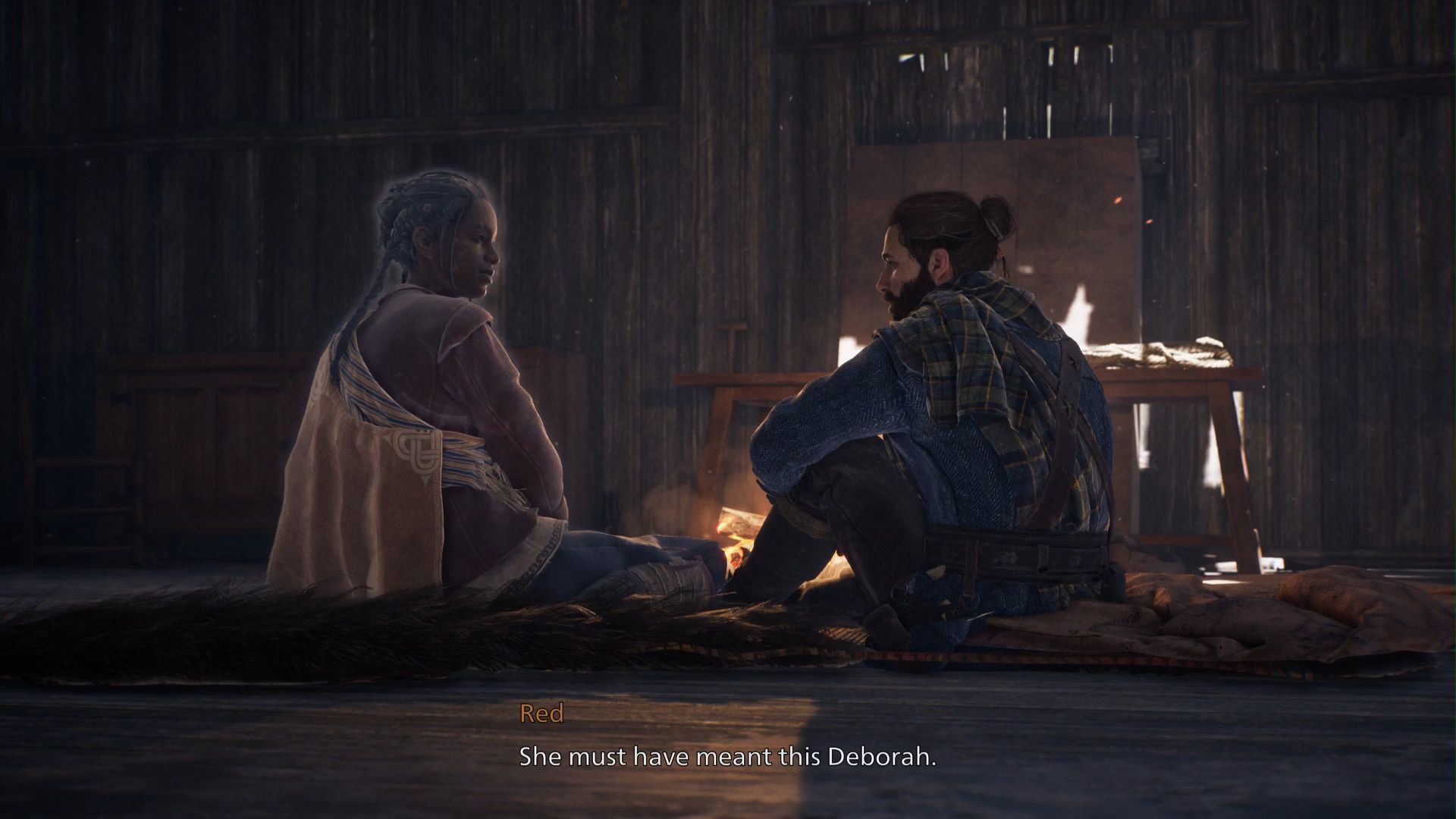
However, even it is unfortunately ruined by the game’s poor pacing, which sees the narrative sequences and main dungeons spread far too thin, interspersed with dull exploration and gameplay. There are simply not enough compelling narrative threads to maintain a constant state of intrigue, yet it seems as if Don’t Nod were too afraid to release a shorter game, opting to stretch out the runtime unnecessarily. This is best seen in the game’s ending, which sees you revisit locations on an endless goose chase as opposed to sending you straight to the final boss.
“While narratively, many of Banishers: Ghosts of New Eden’s side quests are somewhat compelling, mechanically, they’re very tedious.”
Fortunately, when you’re not engaging in the main story, there is a plethora of side quests available, many of which help to flesh out this grim world. These involve helping out settlers who are haunted, often by confronting their demons head-on. Unsurprisingly, considering Don’t Nod’s knack for compelling writing, there are a number of standout side quests, such as helping a soldier overcome his guilt for accidentally killing a friend or saving a former slave from his possessive master. Frankly, these are perhaps the best examples of Banishers’ potential, at least when it comes to their narratives.
However, while narratively, many of these are somewhat compelling, although all too often forgettable, mechanically, they’re very tedious. They involve little more than wandering around linear locations, following ghost trails, or interacting with a series of objects in a room before talking to an abundance of characters. There’s a pseudo investigation system that sees you gather intent on each of the key characters involved, but beyond some minor flavor text and to help those who are struggling to follow along their rather simple stories, it doesn’t offer much.
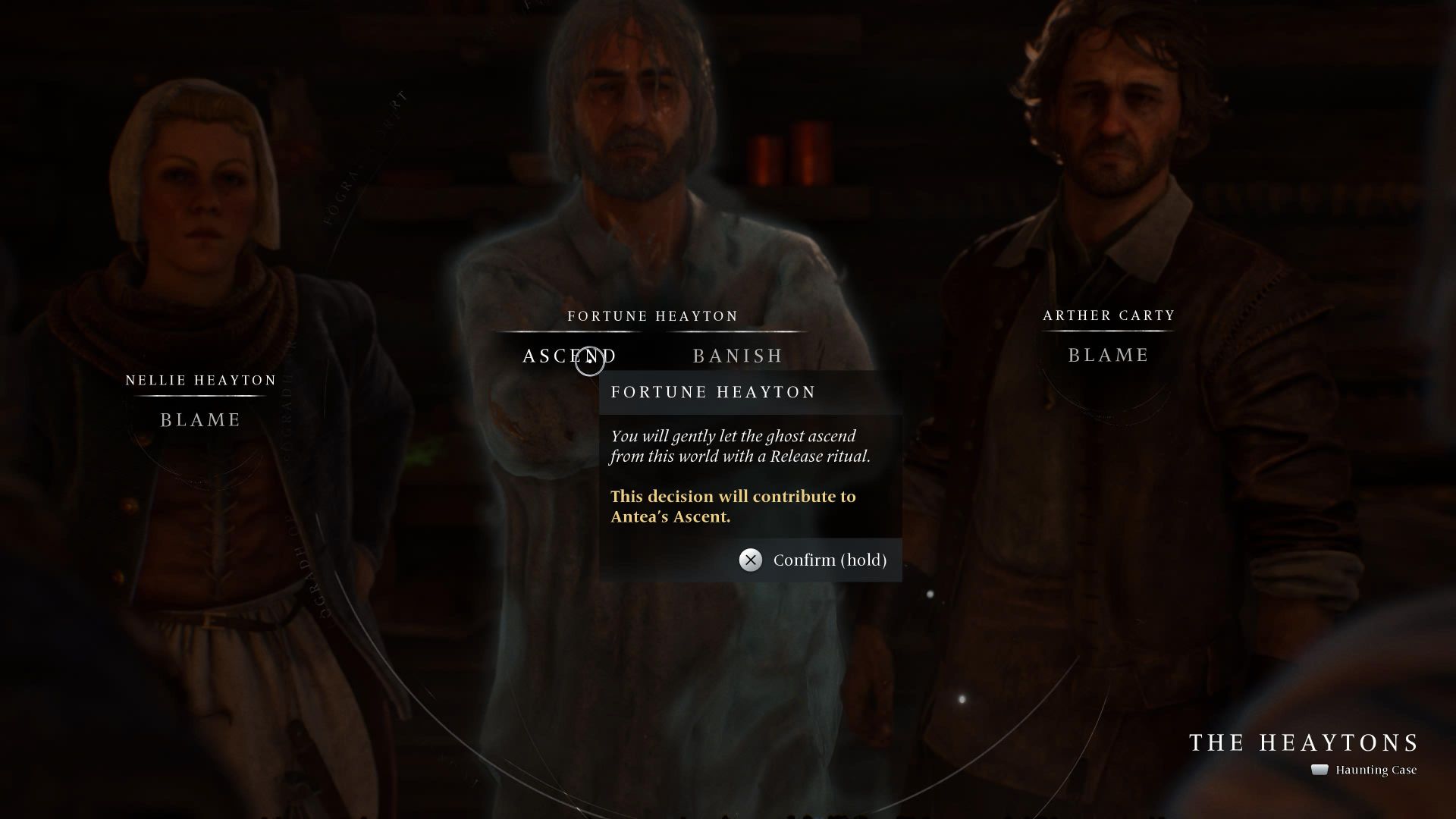
That’s not to say that Banishers: Ghosts of New Eden’s side quests are bad, but they don’t feel particularly worthwhile, especially when considering the fact that the main narrative is stretched so thin that interjecting it with even more disparate stories will only serve to worsen the overall experience. Had they been a little more nuanced, I would have felt more compelled to go and finish up those that I missed. However, I suspect your mileage may vary with these, depending on your tolerance for repetitive gameplay.
“Once you’ve spent an hour in Banishers: Ghosts of New Eden’s world, you’ve experienced practically everything there is to see.”
Similarly, Banishers’ gameplay feels rather lackluster, a pale imitation of the God of War formula that sees you navigate through linear interconnected areas interspersed with combat encounters. There’s little to exploration in Banishers, save for the frequent branching path that leads to more resources that coagulate into a mindnumbing collection of meaningless trinkets. You’ll often find yourself running along a never-ending path only to find it leads to a mushroom you’ve collected in abundance, forcing you to trek back in shame and continue on from where you left off.
Occasionally, you’ll encounter a barrel hanging from a tree that you can shoot down or a combat encounter you’ll need to spend resources to activate. However, none of this really makes venturing into the unknown any more exciting. Once you’ve spent an hour in Banishers: Ghosts of New Eden’s world, you’ve experienced practically everything there is, bar the occasional name and color variant of a mushroom.
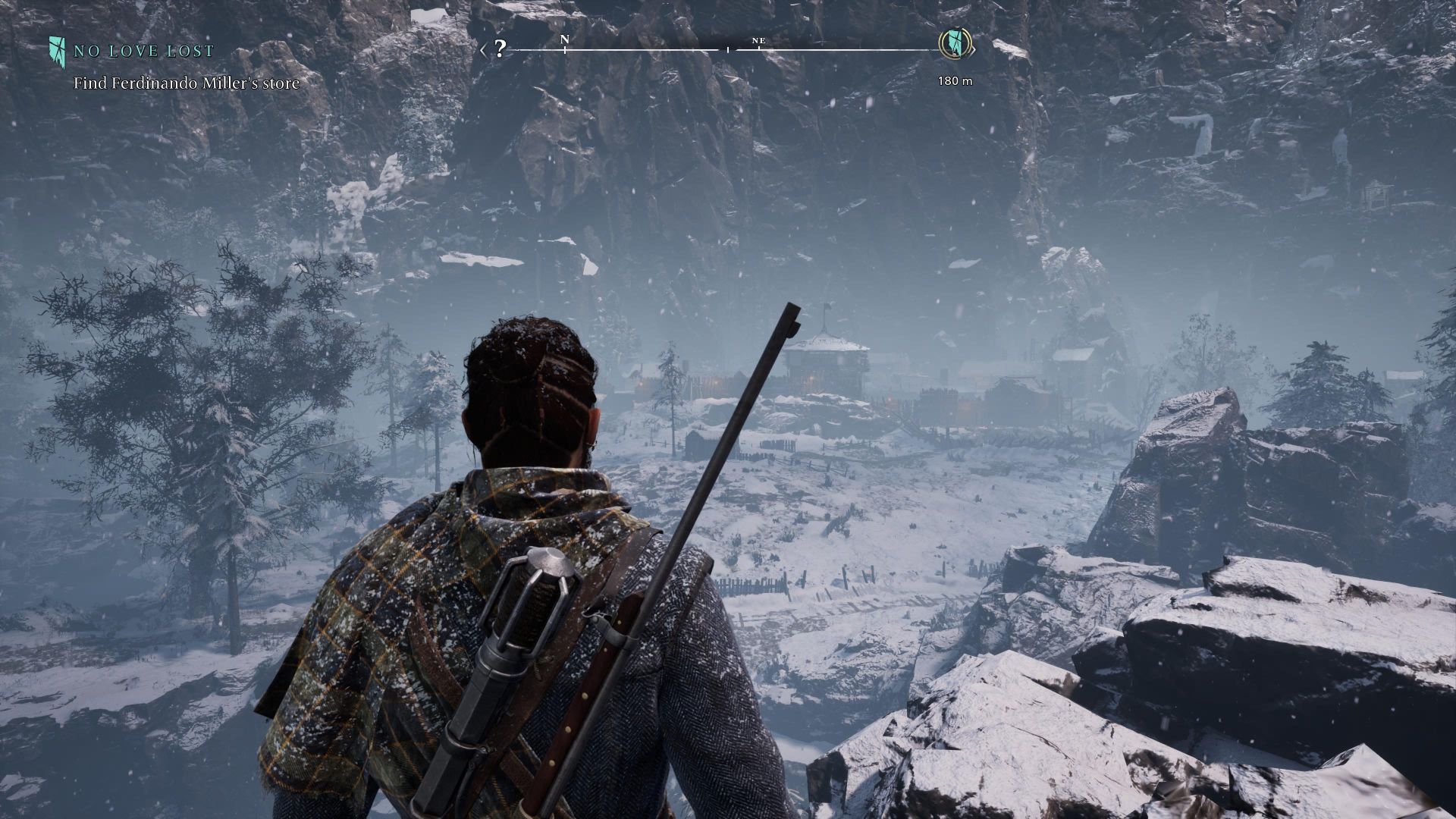
The environments, too, as beautiful as they can be, are often lifeless, with little environmental storytelling to make for compelling eye candy beyond the occasional corpse or abandoned hut. Considering Banishers: Ghosts of New Eden lacks the fantastical and dynamic environments of God of War, it needed something more than trees and rocky mountains to make itself stand out. Unfortunately, it has neither, making exploration a dull affair. Even the otherworldly point-of-view of Antea is a little unremarkable, simply turning up the contrast and making everything feel a little more autumnal.
“The dual protagonists concept doesn’t work nearly half as well as it should, owing to the fact that Antea functions more as Red’s abilities rather than her own character.”
This would be perhaps a little less egregious were it not for the arduous backtracking. While there is fast travel in Banishers, you need to manually go to fast travel points in order to skip to another. Naturally, this leads to you endlessly wandering between campfires, adding unnecessary time to exploration.
To add insult to injury, you’ll rarely need to switch to Antea outside of opening up new paths with her ability. The dual protagonists concept doesn’t work nearly half as well as it should in Banishers, owing to the fact that Antea functions more as Red’s abilities rather than her own character. The afterlife world she inhabits holds a handful of extra chests, but it’s so blatantly telegraphed when these appear that you won’t need to play as her constantly in order to spot them. Every so often, you’ll need to switch to her during investigations, and she’s the only one who can spot ghost trails. So, ostensibly, Antea is your Witcher vision.
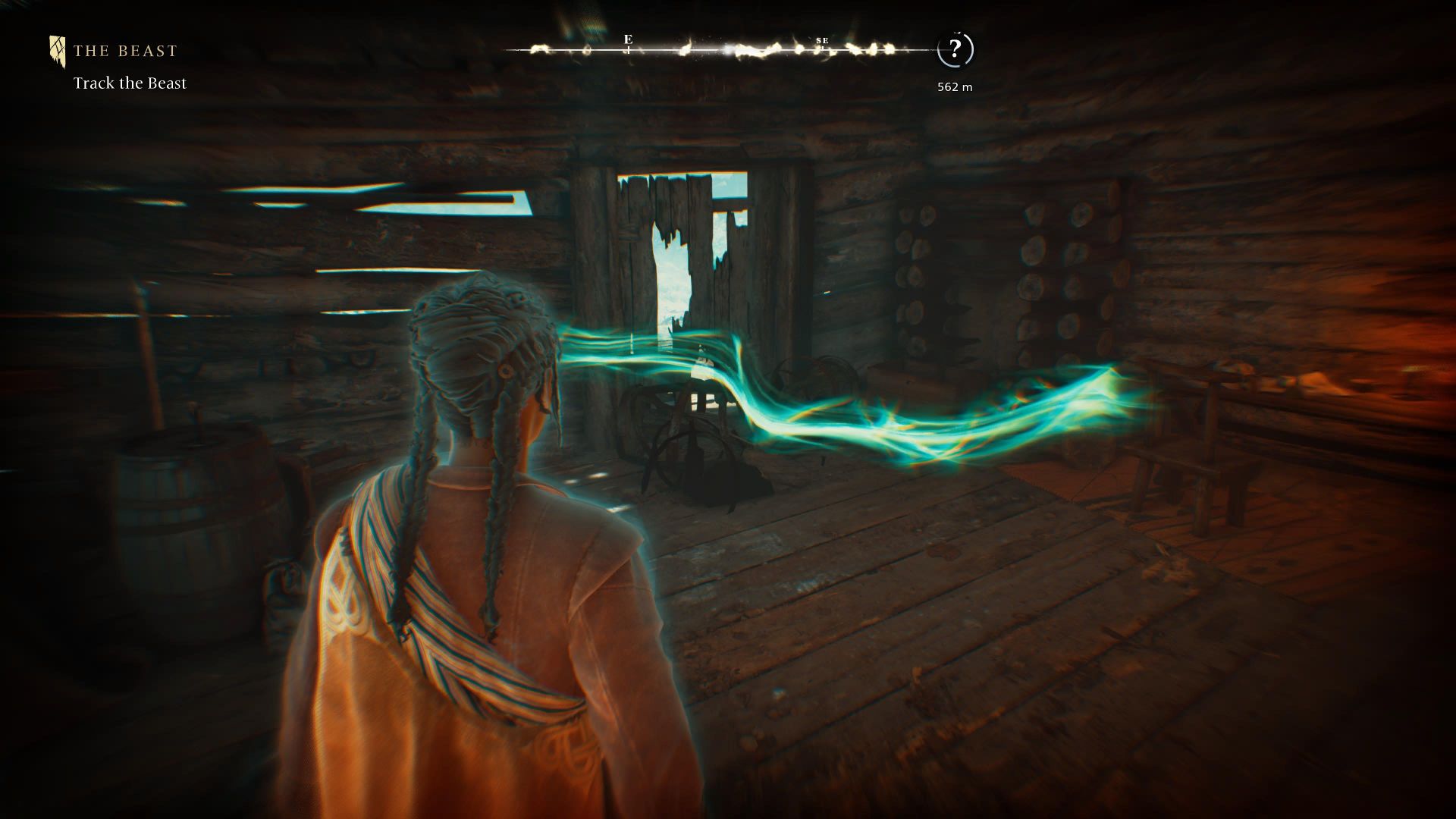
For the most part, you’ll play Banishers: Ghosts of New Eden as Red, with the occasional moment as Antea whenever Don’t Nod remembers to make her important. It’s a genuine shame, as this mechanic has been better used in other titles, such as the somewhat disappointing yet unique The Medium. Had more time been invested into fleshing out this mechanic, perhaps Antea would have felt like a more tangible character outside of her dialogue encounters.
“Without any memorable enemies to fight or abilities to use, combat in Banishers quickly grows stale.”
Unfortunately, combat fares no better. While it’s certainly competent, there’s little variation, with both your abilities and the enemy types stagnating, rarely venturing beyond the expected. Antea will randomly unlock abilities throughout the course of the narrative, acting as both combat skills and ways of accessing new areas in the open world. However, in combat, these aren’t particularly engaging, rarely being more effective than simply punching a ghost to death. Surprisingly, Red never unlocks any abilities, stuck with his light and heavy attack throughout the entire game, with only a parry to spice things up.
You’ll be able to switch between the two characters at any moment, with Antea supposedly being able to deal more damage to certain enemies, encouraging you to alternate on the fly. However, this isn’t really the case, as I never found either to be any more effective, at least on Normal difficulty. This resulted in me typically using Antea until her health ran out and then finishing the job with Red.
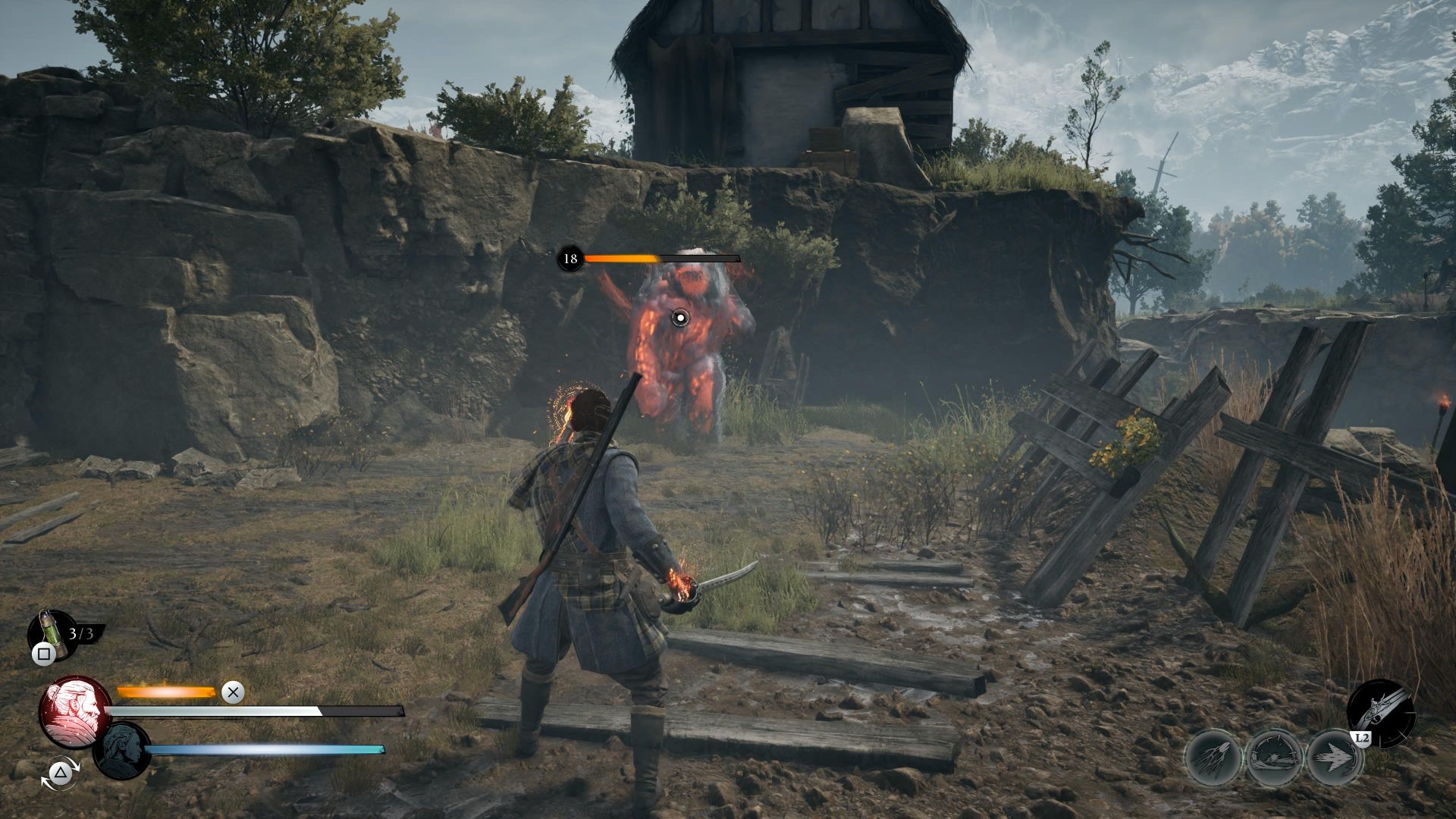
The lack of strategy is almost exclusively down to the boring enemy variety, which rarely challenges the player. There’s a standard enemy, a ranged one, a fast one, and a big one with ghost and physical variants. Your approach to them all is pretty much the same, as dishing out as much damage and occasionally parrying does the trick. Without any memorable enemies to fight or abilities to use, combat in Banishers quickly grows stale.
“The minor stat buffs barely make combat feel substantially different, making progression feel practically nonexistent.”
This is all further worsened by the game’s RPG-lite system. You’ll earn experience points for completing missions and defeating enemies, which then sees you level up and earn skill points. These can then be spent on unlocking nodes for Antea’s abilities, each of which offers a slight stat boost or slightly tweaks the nature of certain attacks. It all feels incredibly redundant, with the leveling system lacking any real meaning or purpose as the enemies were consistently higher leveled than me yet posed little challenge. Additionally, the minor stat buffs barely make combat feel substantially different, making progression feel practically nonexistent.
There is equipment that you can discover while exploring, which further increases both Red and Antea’s stats. These typically come with a trade-off, one that makes you weaker in one aspect of combat while buffing another. However, I rarely found the trade-off to be worthwhile, as most of the base gear, with a few exceptions, saw me right to the end without issue. You can upgrade each piece of equipment, which in turn makes certain numbers increase, but it’s not explained what each of the several stats changes. Some are discernable by intuition, but for the most part, you’re left in the dark when it comes to what makes each of your pieces of equipment unique.
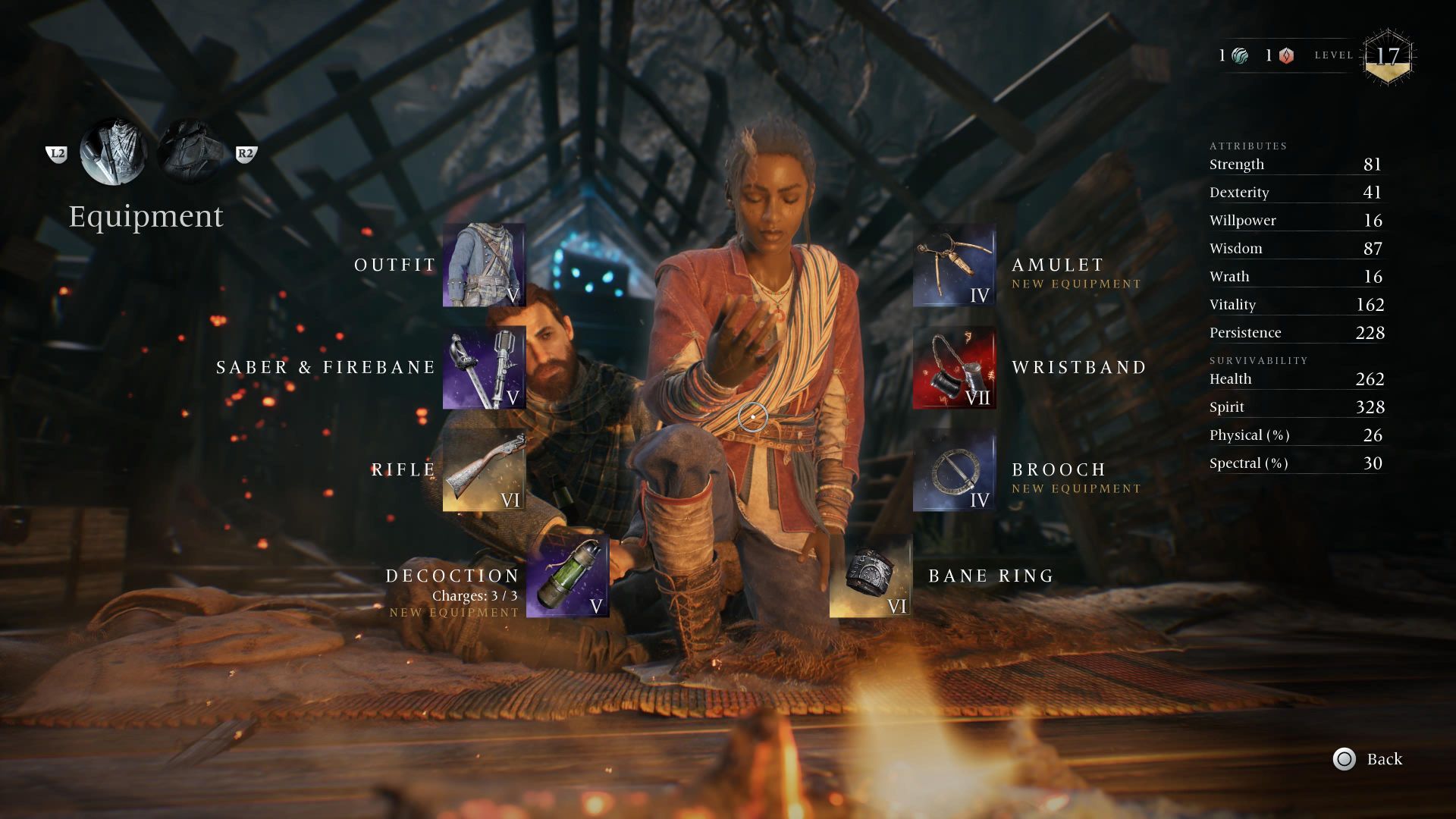
“The decent amount of variety between the settings ensures that, at least visually, the game never feels repetitive.”
Banishers: Ghosts of New Eden at least looks good under certain circumstances. Each of the game’s environments is dense and rich with ambiance, engulfing you in a constant state of dread and sorrow. The forests and marshes are shrouded in a smothering fog, whereas the icy tundras feel irreparably desolate. It’s fitting for the setting and enriches the world-building and overall tone of the game quite successfully. Additionally, the decent amount of variety between the settings ensures that, at least visually, the game never feels repetitive.
The sound design helps to further immerse you into this eerie world. For example, the groans and screams of an ominous creature echoing deep from within a mine were a terrific and terrifying addition to one particular area, ramping up the tension throughout. This level of quality can be found across the board, at least when it comes to the game’s sound design, and genuinely makes certain locations far more intense and engrossing than they otherwise would have been. Unfortunately, the soundtrack feels a little muted. It’s not particularly awful, just rarely memorable, offering little more than background ambiance and occasionally a more bombastic track for combat.
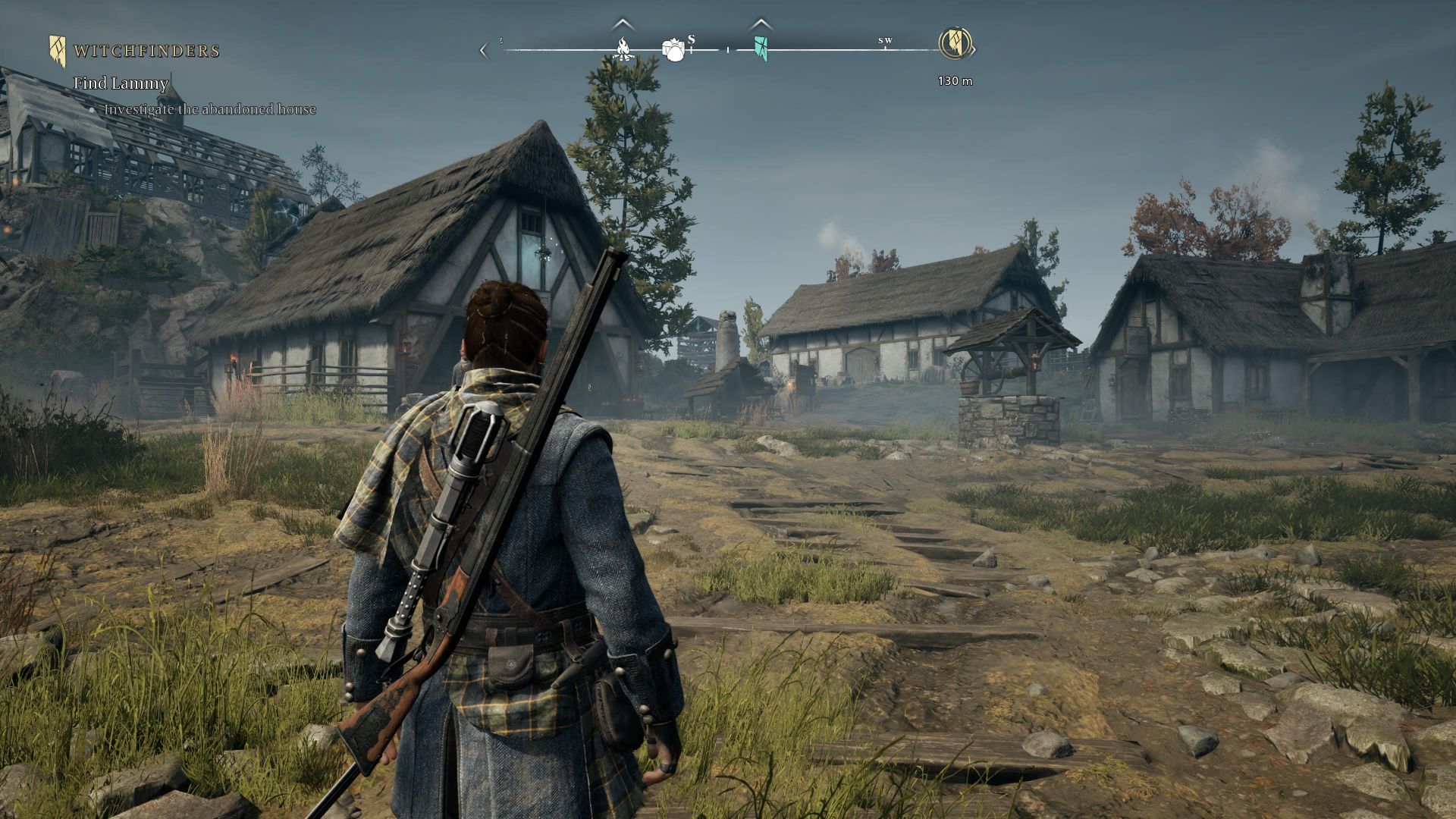
I did, however, encounter a number of glitches, namely audio bugs that saw songs cut out and restart and audio cut out completely aside from combat effects. On several occasions, when booting up the game, it would sit for minutes at a time without progressing to the main menu, and on several more, the game lagged whenever I entered a particularly particle-heavy environment. It was nothing game-breaking, but enough that those who struggle to endure bugs would certainly suffer.
“Were I to sum up Banishers: Ghosts of New Eden in one word, I’d use inconsistent.”
It pains me to say that Banishers: Ghosts of New Eden is perfectly mediocre. It’s neither truly awful nor startlingly good, offering little in terms of innovation or worth. While there are aspects of its story that were particularly affecting, the majority of it felt squandered owing to the lack of meaning in its core choice-driven concept. The gameplay is arduously dull at the worst of times and, at best, a pale imitation of its clear inspirations. Visually, Banishers looks great but rarely unique owing to its lack of fantastical locations, and while the game’s sound design is inspired, the soundtrack is entirely forgettable.
Were I to sum up Banishers: Ghosts of New Eden in one word, I’d use inconsistent. No one aspect of it is ever great, teetering on the precipice of good perhaps, but never great. However, as I mentioned in the introduction, there is something special about it. Whether it’s the compelling side content or the occasional inspired story beat, Banishers offers some content that might be worth seeing. This is what makes it a frustrating experience, as, for all its faults, I really did want to love it. Nevertheless, I would argue that unless you’re willing to put up with a lot of mediocre gameplay and a frustrating lack of chemistry in its core relationship, your money and time are better spent elsewhere.
Disclosure: Game Crater was provided the game for this review. Some links provided in this article are affiliate links. Game Crater will be paid a commission if you use these links to make a purchase.


